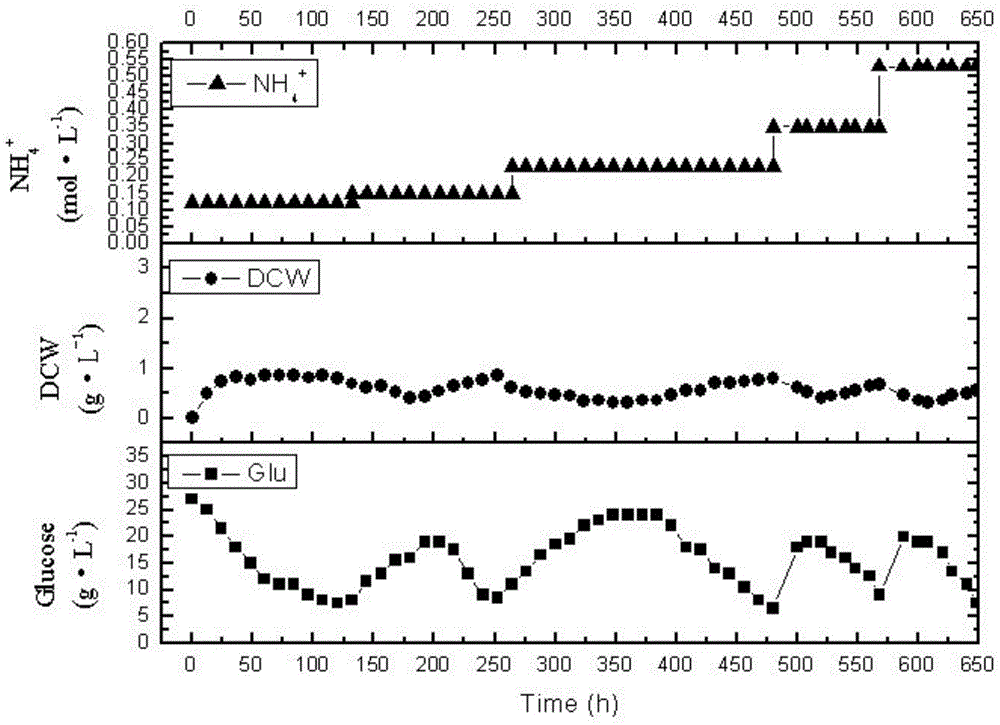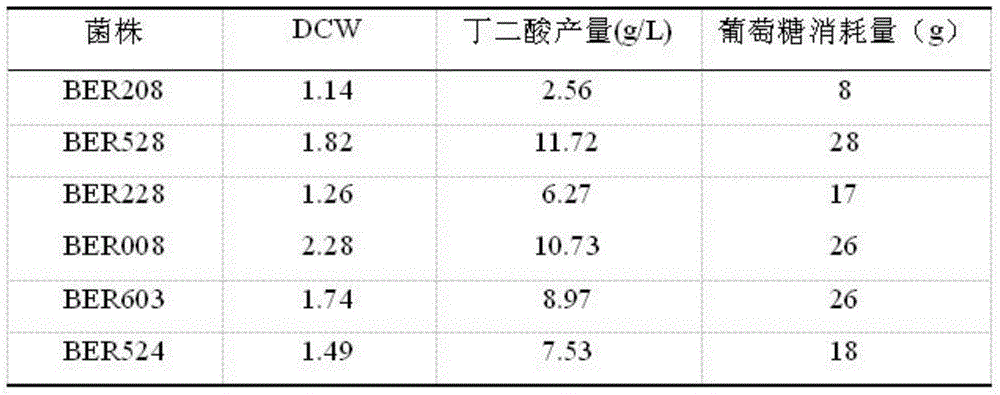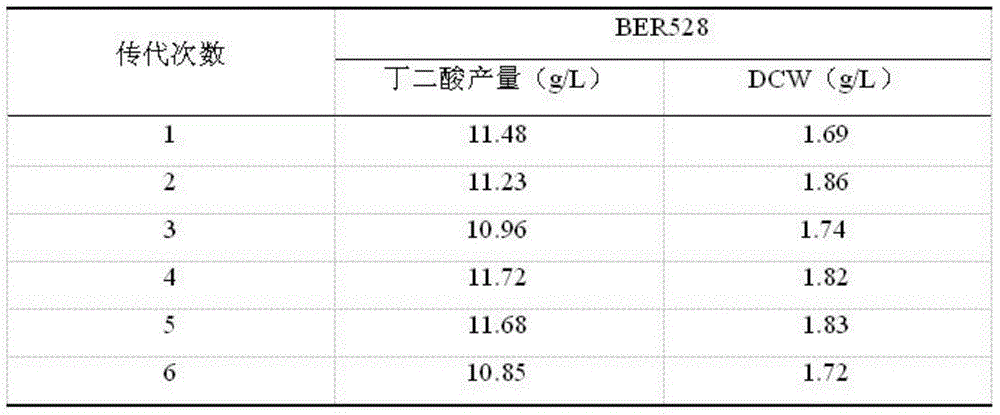Ammonium ion resistant colibacillus for producing succinic acid and application thereof
A technology for producing succinic acid and Escherichia coli, which is applied in the direction of bacteria, microorganism-based methods, microorganisms, etc., can solve problems such as unsatisfactory fermentation effect, high price, and complicated extraction process, and achieve great social significance and economic value.
- Summary
- Abstract
- Description
- Claims
- Application Information
AI Technical Summary
Problems solved by technology
Method used
Image
Examples
Embodiment 1
[0034] This example illustrates the method for continuous culture of Escherichia coli origin strain BER208.
[0035] The method for the continuous culture of Escherichia coli starting strains is as follows:
[0036] The starting strain of Escherichia coli BER208 (self-screened and preserved in this laboratory, preservation number CCTCCNO: M2012351) was activated in LB test tubes, and cultured overnight at 37°C, 200r / min; Inserted into shake flasks, cultured at 37°C, 200r / min for 6h, as secondary seeds. The secondary seed liquid is inoculated into the continuous culture device with an inoculum of 10%. When the cell density in the device rises and reaches a steady state, the dilution rate is increased, and according to the changes in the cell density and sugar concentration in the reactor, Constantly adjust the dilution rate. When the cell density and sugar consumption in the device remain unchanged for 3 retention times, it indicates that mutant strains may appear. Samples ar...
Embodiment 2
[0038] This example illustrates the method of screening excellent Escherichia coli.
[0039] Wherein, the medium formula used is as follows:
[0040] Solid synthetic medium plate: citric acid 3g / L, Na 2 HPO 4 12H 2 O4g / L, KH 2 PO 4 8g / L, MgSO 4 ·7H 2 O1g / L, CaCl 2 2H 2 O10.0mg / L, ZnSO 4 ·7H 2 O0.5mg / L, CuCl 2 2H 2 O0.25mg / L, MnSO 4 ·H 2 O2.5mg / L, CoCl 2 ·6H 2 O1.75mg / L, H 3 BO 3 0.12mg / L, Al 2 (SO4) 3 1.77mg / L, Na 2 MoO 4 2H 2 O0.5mg / L, ferric citrate 16.1mg / L, agar 20g / L, glucose 10g / L, with (NH 4 ) 2 HPO 4 Provide ammonium ions and make NH 4 + The concentration is 0.6mol / L, and the addition amount is 40g / L.
[0041] Seed medium: peptone 10g / L, yeast powder 5g / L, NaCl 5g / L.
[0042] Shake flask fermentation medium: citric acid 3g / L, Na 2 HPO 4 12H 2 O4g / L, KH 2 PO 4 8g / L, MgSO 4 ·7H 2 O1g / L, CaCl 2 2H 2 O10.0mg / L, ZnSO 4 ·7H 2 O0.5mg / L, CuCl 2 2H 2 O0.25mg / L, MnSO 4 ·H 2 O2.5mg / L, CoCl 2 ·6H 2 O1.75mg / L, H 3 BO 3 0.12mg / L, Al 2...
Embodiment 3
[0054] This example illustrates the passage stability of the mutant strain BER528
[0055] On the synthetic medium plate, the mutant strain BER528 was passaged 30 times, and the strain was added with 0.53mol / LNH in exogenous sources every 5 times 4 + Fermentation verification was carried out respectively in the shake flasks of the same experiment, and the experimental results are as shown in Table 2:
[0056]Table 2 Stability analysis of mutant strain BER528 passage
[0057]
[0058] From the experimental results, it can be seen that after 6 consecutive passages, the succinic acid production and DCW of the mutant strain BER528 are relatively stable, and it has good passage stability, which can be used as a production strain for further research and development.
PUM
 Login to View More
Login to View More Abstract
Description
Claims
Application Information
 Login to View More
Login to View More - R&D
- Intellectual Property
- Life Sciences
- Materials
- Tech Scout
- Unparalleled Data Quality
- Higher Quality Content
- 60% Fewer Hallucinations
Browse by: Latest US Patents, China's latest patents, Technical Efficacy Thesaurus, Application Domain, Technology Topic, Popular Technical Reports.
© 2025 PatSnap. All rights reserved.Legal|Privacy policy|Modern Slavery Act Transparency Statement|Sitemap|About US| Contact US: help@patsnap.com



